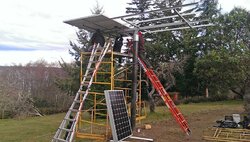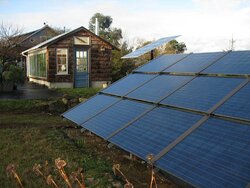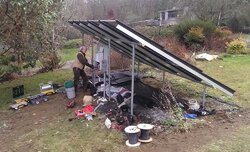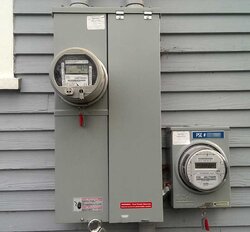Yes, you simply back feed one of the AC panels. In my case, I chose to back feed a double pole breaker in my NEMA 3R combined service entrance/disconnect panel on the back of my house which can accommodate up to 20 single pole, or 10 double pole breakers. The all the circuits for my house are running off a secondary sub-panel downstream of the CSED panel (one concrete block width away on the inside of the house). In my case, one meter tracks energy flow in two directions. Because Florida has no SREC trading system, there is no point in having two meters. In states with SREC trading programs, one of the two utility grade meters typically attached to the PV system tracks total PV generated energy.
You buy a real UL 1741 listed grid tie inverter, it does the sync & safety stuff for you. You basically plug it in, wait ~5 minutes and magic happens. The more of them you plug in, the slower your electric meter spins, until it stops spinning, reverses direction, or the sun goes down.
Gensets are not grid tie inverters. Grid operators and their employees are very cautious of gensets, and they should be. Most gensets were never designed to follow the existing 60hz grid sine wave, and plugging two different phased AC sources onto the same wire is a recipe for disaster. Gensets are intended to have an automatic or manual transfer switch that clearly disconnects the grid wiring from the home to turn the home into an island while the genset is running.
A UL 1741 listed inverter is designed to listen to and follow the output of the existing grid. If the 60hz frequency of the grid isn't there at all, or the grid is operating outside the parameter limits programmed for voltage and frequency specifications, a UL 1741 inverter will either stop generating power (assuming it was generating), or continue to watch and wait until at least ~5 solid minutes of stable power within the grid parameters has been seen before grid synchronized power generation begins.








